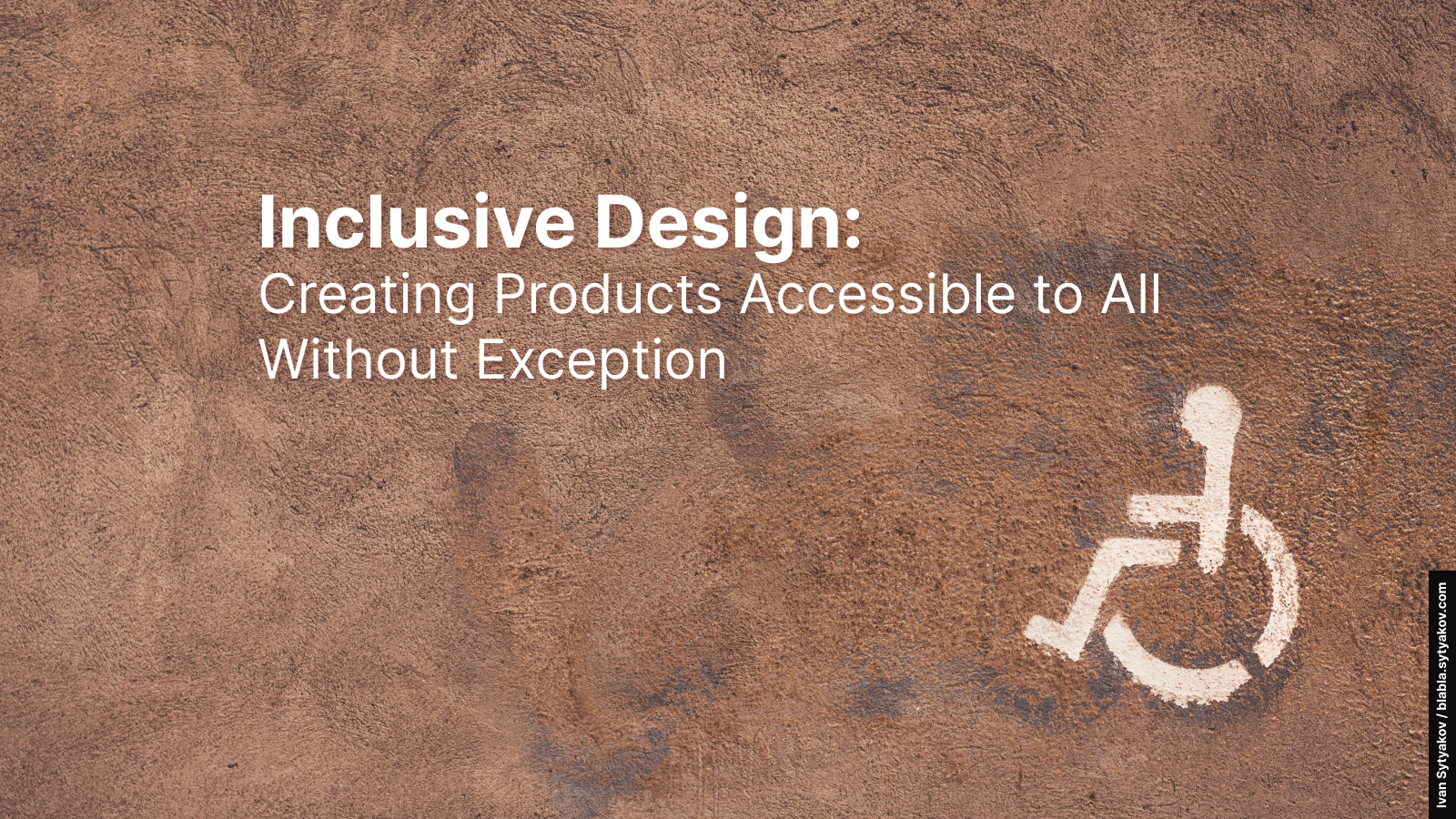Inclusive design is a design practice in which products and services are developed in a way that they are accessible and can serve as many people as possible, regardless of their age, gender, or abilities.
People are at the center of inclusive design. It helps designers understand how to best meet people’s needs and create convenient and understandable solutions that can be used by everyone.
This post is an excerpt of the most interesting thoughts and information from the podcast “Inclusive Design: Creating Products Accessible to All Without Exception”.
Authors and guest:
Let’s go!
- Typewriters and T9 were actually invented by people with disabilities. The typewriter was invented by a man so that a girl could write him letters. T9 was invented by a person with motor impairments to enable faster typing.
- In Yandex.Taxi, there is a separate application for deaf drivers. The designer added function with screen flashing to notify the driver of a new order. On the surface, it may seem like just flashing, but in reality, it is an opportunity for individuals with hearing impairments to work.
- For example, some people cannot control a computer using a mouse, so your interface should be keyboard-operable. The most common issues include incorrect or stuck focus, but one important aspect that designers influence is the lack of visibility of hover effects when transitioning from one element to another.
- Accessibility should be maintained with every interface update.
- If you are designing an interface and think that you will address accessibility issues later, that is the wrong approach. Accessibility should be considered from the beginning, and if necessary, your approach to work should be changed.
- An interesting story is when prosthetics (eyeglasses) transform into design objects, into decorative items. This is precisely the role of designers to turn something that can stigmatize a person into something that people would want to wear, even if they have good eyesight.
- A good example of such design is the iPhone. It is one phone that considers numerous scenarios: a blind person can use it without interfering with my ability to use it;
a person with hearing difficulties can benefit from sound enhancement settings for hearing aids;
there are settings for controlling a smart home for individuals with motor impairments, and so on.
People thought of different scenarios and put them there. That being said, it’s not some kind of thing that makes a script for one, breaks the script for another. - After COVID-19, many people work remotely, and you don’t actually know who is on the other side. They could be visually impaired or have mobility issues. Not all people disclose their problems when starting a job.
- Once, I asked my mother, who lived during the Soviet era:
— Did (Goverment) something in the USSR for accessibility??
— There were no such people there.
— What do you mean there were none?
— Well, they simply didn’t exist.
What is the designer’s first step toward accessibility?
- It is important to understand who these people are, what are their characteristics, what their needs are, how barriers arise.
- How does information architecture influence human interaction with the interface? How does what the designer creates affect how a visually impaired person will interact with that interface? How does a person perceive color? How does that perception work? Why is contrast important to them?
- An important aspect that designers learn during the course is the interaction between designers and developers. This interaction greatly affects accessibility. The designer lays out a certain image, but it is the developer who makes it work. Often, the developer notices things that the designer doesn’t because they will be the ones coding it: how an element behaves, where the hover effect is, what happens if something isn’t clicked.
- Through Accessibility, people have a dialogue.
- For example, in the development of fitness applications, it is important to provide audio instructions on how to perform an exercise. It may seem clear to an ordinary person, but it can be a barrier for someone with visual impairments. Therefore, it is important to provide audio guidance for actions within the application.
What can a Designer do for Accessibility right now?
- Check the design for contrast: small captions do not work.
- For those involved in mobile and web development: label all images (ALT) and objects, use tags, headings (H1, H2, H3), breadcrumbs, and so on.
- When it comes to dyslexia, it is important to have “air” between letters, so they don’t merge. Fonts pose a greater challenge because for people with dyslexia, the letters B and P look the same.
How to conduct accessibility research?
- Start by studying all the theory about accessibility (the user groups, their problems, and barriers).
- Begin with automated tests to save time on testing with individuals with disabilities who will evaluate your product.
- For the Chrome browser, there is an add-on called axe DevTools – Web Accessibility Testing to check the accessibility of websites.
- When transitioning to user testing, it is crucial to understand WHAT to test. What should be tested? What constitutes barriers? You need to study the theory to understand “What should I check for myself?” and “What should the user test?”
P.S. from Valeria Kurmak
It is essential to address personal stereotypes and fears because they limit not only other people but primarily oneself, by depriving the ability to explore something new, meet new people, see a different world, and learn something new in that world. I recommend reflecting on this and considering what personal fears and stereotypes you have (they may not relate to inclusive design) and how to break them. Shatter and demolish!
Links
Valeria Kurmak — https://kurmak.info/en/
Accessibility Course — https://accessibilityunity.com/en/
How People with Disabilities Bring Cyberpunk Closer | Ivan Bakaidov | TEDxKarpovka —https://www.youtube.com/watch?v=IlT4pwMGJCo
Web Content Accessibility Guidelines — https://www.w3.org/WAI/standards-guidelines/wcag/
Photo on cover by Tim Mossholder on Unsplash




